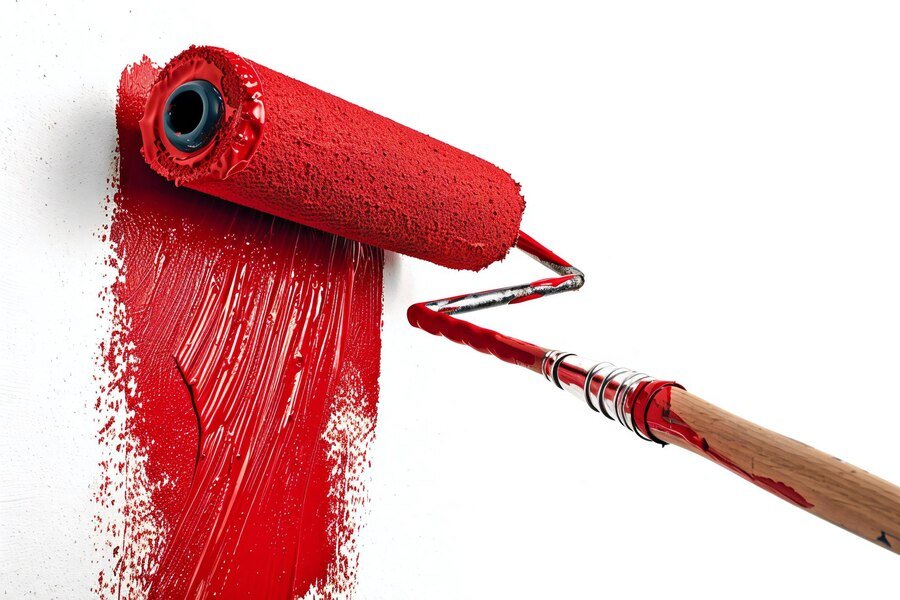Introduction to Mithila Paint
Mithila painting is a traditional art form that originated in the Mithila region of Bihar, India. This vibrant and intricate style of painting has been practiced for centuries, showcasing the rich cultural heritage of the area. Initially created by women as a means of artistic expression and storytelling, Mithila painting has evolved into an important medium that reflects the social and spiritual nuances of life in this part of India.
The origins of Mithila painting can be traced back to as early as the 7th century, with roots in the ancient Hindu tradition. It has since continued to flourish, often depicting themes that are deeply embedded in the local culture, such as mythology, folklore, and daily life. Artists utilize natural pigments derived from the surroundings, making Mithila home paints not only beautiful but also environmentally sustainable. The use of these organic materials enhances the authenticity and integrity of the artwork, inviting viewers to connect with the essence of nature.
Mithila painting embodies the aspirations and dreams of the community, serving as a canvas for both personal and shared narratives. The intricate designs and vibrant colors represent not just aesthetic beauty but also the complexities of human emotions, beliefs, and aspirations. Each painting tells a unique story, whether it be spiritual or rooted in everyday experiences, showcasing the artist’s connection with their cultural identity.
This art form remains significant in contemporary society as it helps to preserve the cultural heritage of the Mithila region while providing new avenues for artists to innovate and express their creativity. As Mithila home paints gain recognition beyond traditional boundaries, they continue to inspire and transform individual spaces, bringing a touch of this exquisite artistry into homes and lives across the globe.

Historical Context and Evolution
Mithila painting, a traditional art form originating from the Mithila region of Bihar, India, boasts a rich historical legacy that dates back to ancient times. This vibrant form of artistry is characterized by intricate patterns, vivid colors, and the depiction of mythological themes, nature, and social rituals. Initially, Mithila paintings were executed on mud walls of homes during festive occasions and significant life events, serving as a powerful medium for storytelling and cultural expression.
The origin of Mithila painting can be traced to the ancient practices of women who painted the walls of their homes to communicate their beliefs and values. Over centuries, these paintings have evolved significantly, reflecting the changes in society, culture, and the socio-political environment. The introduction of new materials, such as cloth and paper, allowed artists to transition from traditional to contemporary styles, marking a significant evolution in the craft. As these artworks gained recognition, the natural pigments and organic dyes used in the paintings became synonymous with the authenticity of Mithila home paints.
The 20th century marked a turning point in the recognition of Mithila painting on a global scale. Artists began to gain formal training and exposure, facilitating the technique’s adaptation to various mediums, including murals and canvases. This evolution not only played a critical role in preserving cultural narratives but also allowed the craft to thrive outside its traditional confines. The growing popularity of Mithila painting contributed to a resurgence of interest in indigenous arts, prompting initiatives to support and promote the artisans involved.
Today, this art form stands as a testament to the innovative spirit and resilience of its practitioners. Mithila home paints encapsulate the essence of regional identity, while also inviting contemporary aesthetics, thus bridging the gap between past and present. The ongoing evolution of Mithila painting reflects a broader cultural narrative that celebrates and preserves its rich heritage.
Techniques and Materials Used
Mithila painting is a vibrant and intricate art form that utilizes various techniques and materials to create its distinctive aesthetic. This traditional practice, originating from the Mithila region of Bihar, India, is characterized by its detailed narratives and symbolic themes, beautifully illustrated through a variety of colors and patterns. A fundamental element of Mithila home paints is the use of natural dyes, derived from locally sourced plants, minerals, and even insects. These eco-friendly pigments not only imbue the artwork with vivid hues but also maintain a connection to the natural environment.
Craftspeople employ a meticulous process when preparing these dyes, often involving the grinding of leaves and flowers or processing earth materials to extract rich colors. This commitment to sustainability ensures that the emotional and cultural significance of the artwork is preserved, allowing it to resonate deeply with the community. In addition to natural dyes, artists utilize handmade brushes crafted from twigs or cotton to bring precision to their work. The tools used in Mithila painting are as varied as the art form itself, with artists frequently adapting them to achieve specific aesthetic effects or textures.
The application techniques in Mithila art further enhance its quality. Fine details and intricate patterns are achieved through careful layering and fine brushwork, often embodying themes of fertility, nature, and mythology. The careful consideration of material and technique contributes significantly to the unique atmosphere of Mithila home paints. Not only do these details showcase the creativity and skill of the artist, but they also reflect the deep cultural narratives of the Mithila region, inviting viewers to engage with the stories depicted in the art. In summary, the blend of natural materials and traditional techniques makes Mithila painting a significant cultural heritage that continues to inspire and transform artistic expression.

Themes and Motifs in Mithila Painting
Mithila painting, a vibrant and intricate art form from the Mithila region of India, is celebrated for its rich use of themes and motifs that deeply resonate with cultural and spiritual narratives. Nature is one of the most prominent themes depicted in Mithila paintings. Artists often represent flora and fauna, such as birds, trees, and flowers, which symbolize fertility, harmony, and the cycle of life. The intricate detailing of these natural elements serves not only to beautify the artwork but also to connect the viewer with the rhythms of the natural world.
Another significant theme found in Mithila home paints is mythology. Many paintings illustrate stories from ancient scriptures and epics, notably the Ramayana and the Mahabharata. This narrative style breathes life into the gods and goddesses, showcasing their virtues and tales of valor. For instance, depictions of Lord Krishna are prevalent, symbolizing love, mischief, and divinity. Such representations help in cultivating a sense of reverence and cultural identity among the viewers.
Religious stories also play a crucial role in the thematic tapestry of Mithila art. The paintings often encapsulate various cultural festivals and ceremonies, illustrating the community’s spiritual practices. These portrayals act as a vibrant chronicle of the local customs and beliefs, making the paintings a treasure trove of cultural heritage.
Furthermore, human emotions find their expression in Mithila paintings, capturing the essence of joy, sorrow, love, and devotion. Artists use symbols like the lotus flower for purity and the peacock for beauty, imbuing their work with layers of meaning. This overarching narrative within Mithila home paints demonstrates how emotional and spiritual themes unite to transform abstract dreams into visually stunning realities, inviting viewers to engage with their stories on a personal level.

Mithila Painting as a Medium of Expression
Mithila painting, an ancient form of art originating from the Mithila region of Nepal and India, is celebrated for its intricate patterns and vibrant colors. This art form serves not only as a means of decoration but as a profound medium for personal expression and storytelling among the artists who practice it. Artists utilize Mithila home paints—richly pigmented, natural materials derived from plants and minerals—to create vivid illustrations that encapsulate their innermost thoughts, dreams, and societal narratives.
For many artists, Mithila painting becomes a method of visualizing their aspirations and hopes. Each stroke and color choice carries meaning, allowing them to convey emotions and connect with their audience on a deeper level. Through their art, they address a variety of themes ranging from personal experiences to broader societal issues. This transformative aspect of Mithila art not only enriches the individual artist’s journey but also fosters a shared understanding and appreciation among viewers, bridging cultural and emotional divides.
The authenticity of Mithila painting lies in its roots within the community, often reflecting the collective aspirations and struggles of the people. Artists draw inspiration from their surroundings and the narratives passed down through generations, crafting works that resonate with both local and global audiences. As Mithila home paints provide a unique canvas for these stories, they serve as a window into the artists’ worlds, allowing others to partake in the shared human experience. In this way, Mithila painting transcends mere aesthetic appeal; it becomes a vital channel of expression that encapsulates the hopes and dreams of the artist, as well as the community from which it springs.
Impact on Contemporary Art and Design
Mithila painting, with its rich cultural heritage and intricate designs, has made a significant impact on contemporary art and design. This traditional art form, originating from the Mithila region of Bihar, India, has evolved over the years and found its place within modern aesthetics. Many contemporary artists have recognized the vibrant colors and detailed narratives characteristic of Mithila paintings, leading to innovative collaborations that blend traditional techniques with modern design principles.
Collaborations between Mithila artists and contemporary designers have yielded a plethora of unique products and styles. By incorporating Mithila home paints into interior design, for example, designers can create inviting and visually striking spaces that tell a story through art. These partnerships have enabled traditional artists to gain visibility in contemporary markets, allowing them to reach broader audiences and preserve their craft in a modern context. The fusion of styles often results in products that not only serve a functional purpose but also showcase the rich cultural narratives embedded within Mithila art.
Additionally, Mithila motifs have transcended traditional boundaries and are now seen in various elements of design, including fashion, home decor, and even digital art. The integration of these motifs in textiles, wall art, and accessories adds a unique touch to contemporary design while honoring the artistry of the Mithila style. Fashion designers, in particular, have embraced Mithila patterns, seamlessly incorporating them into clothing lines that celebrate cultural heritage while appealing to modern sensibilities.
This dynamic exchange between the traditional and contemporary realms not only enriches the design landscape but also highlights the relevance of Mithila painting in today’s world. As the art form continues to inspire new generations of creators, it is poised to maintain its influence in contemporary art and design, ensuring that Mithila home paints and their stories remain vibrant and cherished.

Preservation Efforts and Challenges
Mithila painting, a traditional art form originating from the Mithila region of Bihar, India, serves as a vibrant expression of cultural identity. However, the preservation of this unique heritage has become increasingly complex in the face of modernization and commercialization. Artists who practice Mithila home paints often find themselves at a crossroads, torn between maintaining the authenticity of their craft and adapting to contemporary market demands.
The commercialization of Mithila painting, while providing economic opportunities for artists, poses significant challenges. With the growing popularity of these artworks, many creators face pressure to produce work that caters to mainstream tastes rather than adhering to the traditional techniques and themes that define Mithila art. This shift not only risks diluting the cultural significance of Mithila home paints but also threatens to erase the stories and meanings embedded in the original motifs.
In response to these challenges, various initiatives have emerged to support the preservation of Mithila painting. Organizations dedicated to promoting cultural heritage often conduct workshops and training sessions aimed at encouraging younger generations to pursue this art form. Additionally, exhibitions and fairs highlighting traditional Mithila artists play an essential role in keeping the art alive, showcasing their work while educating the public about its significance.
Moreover, digital platforms are increasingly being utilized to promote Mithila art on a global scale. Artists can now reach wider audiences while simultaneously ensuring that their unique styles and narratives remain intact. Despite the ongoing challenges posed by commercialization and societal changes, these various efforts underscore a commitment to preserving the authenticity and beauty of Mithila home paints as a cherished cultural heritage.
Mithila Paintings in Global Culture
Mithila paintings, an ancient art form originating from the Mithila region of Bihar, India, have significantly impacted global culture in recent years. These intricate artworks, characterized by vibrant colors and meticulous patterns, have transcended geographical boundaries through various avenues, including international exhibitions, art festivals, and digital platforms. As cultural exchanges flourish, mithila home paints have emerged as a symbol of artistic expression that reflects both regional identity and universal themes.
International exhibitions dedicated to Mithila art have played a crucial role in introducing this unique style to a diverse audience. Notable galleries and museums around the world, from Europe to North America, have showcased Mithila paintings, allowing visitors to appreciate the rich heritage and storytelling elements embedded in these artworks. Such exposure fosters cross-cultural appreciation and supports local artists, whose traditional methods continue to challenge contemporary artistic norms.
Art festivals also contribute significantly to the popularity of Mithila paintings on a global scale. Events that celebrate traditional and folk arts frequently feature Mithila artists, encouraging dialogue and interaction between creators and spectators. This interaction often leads to collaborations and new interpretations that further expand the reach of mithila home paints, inspiring artists worldwide to incorporate these motifs into their work. Moreover, platforms like social media have facilitated easy sharing of Mithila art, allowing for even broader dissemination and revitalization of this traditional craft.
In an age marked by digital interconnectedness, the rise of online marketplaces has enabled Mithila artists to sell their works directly to consumers across the globe. This has not only provided financial opportunities for artists but has also cultivated a wider audience appreciative of the artistry and cultural significance behind Mithila paintings. Through these efforts, Mithila art continues to evolve and thrive, bridging cultural divides and captivating hearts worldwide.

Conclusion: Celebrating the Beauty of Dreams
Mithila painting stands as a profound cultural expression that transcends mere aesthetics. It encapsulates dreams, aspirations, and the rich traditions of the Mithila region in India. This age-old art form intricately weaves together themes of nature, mythology, and social narratives, crafting pieces that resonate with the viewer’s emotions and experiences. Each stroke and color in Mithila home paints reflects not just artistic skill but also the deeper sentiments and stories of the artists, who pour their dreams into every canvas.
As we witness the resurgence of interest in Mithila art, it becomes evident that supporting these artists is crucial for preserving their legacy and encouraging the continuation of this beautiful tradition. The vibrant motifs and intricate designs of Mithila paintings not only enhance our surroundings but also invite us to engage with the rich history and cultural values they represent. By choosing Mithila home paints for our living spaces, we are not just beautifying our homes; we are also celebrating a vibrant culture and empowering the talented artists behind these captivating works.
In an ever-changing world where modern art forms can often overshadow traditional practices, it is vital to recognize the significance of Mithila painting. It is an art form that serves to inspire and evoke a sense of connection to our roots. By appreciating and promoting Mithila home paints, we encourage a dialogue that allows the aspirations of these artists to flourish, while simultaneously enriching our own lives with their meaningful creations. Thus, as we reflect on the remarkable journey of Mithila painting, let us embrace and honor the beauty of dreams manifested through this extraordinary artistry.

